Authors
Kyle Churchman

Kyle Churchman is Associate Vice President of Global Policy at AdvaMed, the world’s largest association of medical technology companies. He completed his master of arts concentrating in China studies at Johns Hopkins University’s School of Advanced International Studies. Prior to attending SAIS, he was a resident junior fellow at the Center for the National Interest, where he published articles on cross-strait relations, Taiwan’s domestic politics, and Chinese foreign policy for The National Interest. He previously served as a researcher for the US-China Economic and Security Review Commission and the National Bureau of Asian Research. He graduated magna cum laude from George Washington University with a B.A. degree in international affairs and Chinese.
Articles by Kyle Churchman
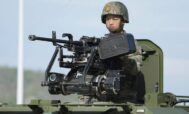
China - Taiwan
May — December 2024Increasing Perils Ahead
Lai Ching-te insisted at his May inauguration that Taiwan is sovereign and not subordinate to China.
Beijing reacted by increasing cross-Strait tensions. China’s latest rounds of military exercises make clear that it is preparing to use force or at least gray-zone intimidation to effect reunification. Taiwan’s opposition Kuomintang continued unofficial contacts with the Chinese Communist Party, seeking reconciliation but risking aiding China’s efforts to fragment Taiwan. Taiwan’s TSMC continues to expand in Taiwan and overseas in ways that keep it at the center of the global high-tech economy. Taiwan has increased its purchases of military equipment from the US and opened negotiations on a bilateral tax agreement. Beijing views US support for Taiwan as collaboration in Lai’s separatism. US President-elect Donald Trump has said that Taiwan stole the production of semiconductors from the US and should pay for US military support. However, this animus may be balanced by the outspoken Taiwan supporters he has chosen for his national security team. Can Taiwan overcome its internal divisions and Trump’s Taiwan skepticism? Can China, Taiwan, and the US step back from a confrontational spiral? None of this will be easy, but failure may put Taiwan’s future at risk.
Lai Ching-te’s Inaugural Address and Cross-Strait Relations
The most important development in relations between Taiwan and China over the past six months has been the inauguration of Taiwan’s new president, Lai Ching-te, and China’s reaction. Lai was elected on Jan. 13 to succeed Tsai Ing-wen and continue the Democratic Progressive Party’s (DPP) leadership of Taiwan’s government. In his inaugural address on May 20, Lai echoed themes familiar from Tsai’s presidency. Lai began by proclaiming that the people of Taiwan had elected him as “president of the Republic of China in accordance with the Republic of China Constitution system” and that “the Republic of China Taiwan is a sovereign, independent nation in which sovereignty lies in the hands of the people.” He praised the people of Taiwan “for refusing to be swayed by external forces.” He promised to “continue working with other democratic nations to form a democratic community.”
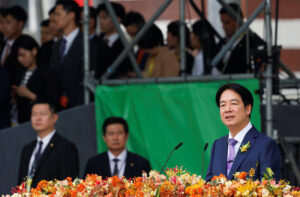
Figure 1 In his inauguration speech, Taiwan’s new President Lai emphasized China must stop military intimidation. Photo: PBS News.
Recalling “Russia’s invasion of Ukraine and conflict between Israel and Hamas,” Lai warned that “China’s military actions and gray-zone coercion are considered the greatest strategic challenges to global peace and stability.” And “no one wants [Taiwan’s] achievements to be destroyed by war.” Lai promised that his new government would uphold Tsai’s Four Commitments, which include that “the ROC (Taiwan) and the [the People’s Republic of China] PRC should not be subordinate to each other.” Continuing to echo Tsai’s words, Lai said that Taiwan would “neither yield nor provoke, and maintain the status quo.” What Lai did not say May 20 was that his administration would continue conducting cross-Strait relations on the basis of the ROC Constitution and Cross-Strait statute.
Lai then issued a challenge to Beijing: “I hope that China will face the reality of the Republic of China’s existence, respect the choices of the people of Taiwan, and in good faith, choose dialogue over confrontation, exchange over containment, and under the principles of parity and dignity, engage in cooperation with the legal government chosen by Taiwan’s people.”
Using language apparently designed to appeal to Washington, Lai concluded that “Taiwan is strategically positioned in the first island chain, and what affects us here affects global geopolitical development,” and Taiwan remains “a frontline guardian of world peace.”
To Beijing, Lai Looks Just Like Tsai
Beijing undoubtedly read Lai’s words as a continuation of the policies in Tsai’s first inaugural address in 2016. Lai’s call for dialogue almost certainly reminded Beijing of Tsai’s offer to open a dialogue based on her reading of cross-Strait talks starting in 1992.
Tsai had promised “to maintain the existing mechanisms for dialogue and communication across the Taiwan Strait,” including the “various joint acknowledgments and understandings” reached by the two sides in 1992 as well as the “over twenty years of interactions and negotiations” since 1992. She called on China to “set aside the baggage of history and engage in positive dialogue, for the benefit of the people on both sides.”
Because Tsai did not identify the outcome of the 1992 talks as “the 1992 Consensus,” a term coined by a KMT commentator almost a decade afterward and then adopted by Beijing, China’s Taiwan Affairs Office (TAO) rejected Tsai’s offer out of hand. It insisted that Taiwan acknowledge itself part of “one China,” which Tsai refused to do. Beijing sees Lai’s offer of dialogue as more of the same.
Lai’s Inaugural Speech and Reactions Were Predictable
In the wake of Lai’s inaugural speech, the TAO responded in the same vein as they had to Tsai eight years earlier: “The Democratic Progressive Party stubbornly adheres to the separatist position of ‘Taiwan independence,’ refuses to recognize the ‘1992 Consensus’ that embodies the one-China principle . . . spreads separatist fallacies, incites confrontation between the two sides of the Taiwan Strait, and attempts to ‘rely on foreign countries to seek independence’ and ‘seek independence by force’.” Chinese Foreign Minister Wang Yi was even more outspoken: “The treacherous acts of Lai Ching-te and his ilk, who betray the nation and their ancestors, are despicable” (translation from 5-21-2024 Sinocism.)
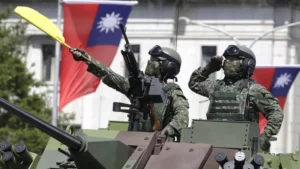
Figure 2 Taiwanese soldiers salute during National Day celebrations in front of the Presidential Building in Taipei, Taiwan, October 10, 2021. Photo: AP, Chiang Ying-ying.
Lai’s critics in Taiwan worried that his speech might have weakened any chance for cross-Strait dialogue. Lai’s speech was “tougher than expected” and might be “moving towards a sovereign nation without formally declaring independence under the name of Taiwan,” according to James Yifan Chen at Tamkang University.
The US State Department congratulated Lai and Taiwan: “The United States congratulates Dr. Lai Ching-te on his inauguration as Taiwan’s fifth democratically elected president. We also congratulate the Taiwan people for once again demonstrating the strength of their robust and resilient democratic system.” The Wall Street Journal captured the US reaction in its headline: “Taiwan’s New President Serves Up Predictability in Era of Turmoil.”
Perhaps the single most striking feature of Lai’s inaugural address and the reactions to it was the sense that there is no longer any hope for dialogue. Taiwan’s offer to open a dialogue were offered not for Beijing but to appear responsible in the eyes of Taiwanese independents and foreign audiences, most importantly the US. Lai and the TAO both seemed well aware that Beijing’s prerequisites for dialogue—acknowledging the 1992 Consensus by name and describing Taiwan as part of “one China”—were simply not feasible politically for a DPP president of Taiwan in 2024.
Lai’s National Day Speech Offered Half an Olive branch
On Oct. 10, Lai gave his second major speech of the year on the National Day of the Republic of China. Lai said that the ROC began in 1911, when a group of democratic dreamers in China overthrew the Qing Dynasty; it was defended in 1949, when ROC soldiers defended the island of Kinmen; and it claimed its democracy in 1979 when Taiwan dissidents demonstrated in Kaohsiung to celebrate International Human Rights Day. For Lai, the message was clear: Taiwan’s democracy is the fulfillment of the aspirations of the founders of the ROC in 1911, a dream that began before the Chinese Communist Party was founded. In doing so, Lai linked Taiwan with China in a way no DPP leader before him had done. When President Tsai celebrated the National Day of the Republic of China in 2023, she praised “the unwavering spirit that has underpinned the Republic of China since establishing itself in Taiwan 74 years ago,” words which seemed to suggest that for her the ROC was only the ROC after it came to Taiwan and was distinct from the ROC in China.
Although the dream began in China, Lai made it clear that today it was not the dream of China’s current rulers but instead “the dream that Taiwan’s 23 million people all share.” To drive home that point, Lai said again that “the Republic of China and the People’s Republic of China are not subordinate to each other. On this land, democracy and freedom are growing and thriving. The People’s Republic of China has no right to represent Taiwan.” In short, Beijing’s one-China principle does not apply in Taiwan.
The rhetorical and military responses from China were predictable and unmistakable. According to the TAO, Lai “continued to advocate the ‘new two-state theory’ of “mutual non-subordination” in his speech [and] fabricated the fallacy of “Taiwan independence.” The US rebuke to the TAO was equally predictable: “The PRC response with military provocations to a routine annual speech is unwarranted and risks escalation.” The spokesperson for China’s Ministry of Foreign Affairs (MOFA) responded in kind: The US should “stop arming Taiwan and stop sending any wrong signal to the ‘Taiwan independence’ separatist forces.”
Two Double-edged Sword Exercises
Both Lai’s inaugural speech and his Oct. 10 National Day speech were followed by large-scale military exercises launched by China’s People’s Liberation Army (PLA), dubbed Joint Sword 2024a and 2024b. China’s designating these exercises Joint Sword 2024a and 2024b linked them to the Joint Sword 2023 exercise that the PLA conducted in the wake of President Tsai’s meeting with US Speaker of the House Kevin McCarthy in April 2023 and less directly to the extended PLA exercise in the aftermath of Speaker Nancy Pelosi’s visit to Taiwan in August 2022.

Figure 3 The Chinese People’s Liberation Army (PLA) launched ‘Joint Sword-2024B’ military drills near Taiwan on Monday, the country’s Defense Ministry said in a statement. Photo: MEHR News Agency
The exercises had two purposes. The first was propaganda. China’s foreign ministry described Joint Sword 2024a, launched three days after Lai’s inauguration as “a necessary and legitimate move to safeguard national sovereignty and territorial integrity, crack down on ‘Taiwan independence’ separatist forces and their separatist moves, and send a warning to external interference and provocation.” The second purpose of Joint Sword 2024a was to strengthen PLA capabilities to interdict commercial traffic in the Taiwan Strait and between Taiwan and the islands it controls near the Chinese coast. For the first time, the exercise incorporated Chinese Coast Guard vessels, which practiced inspections of foreign vessels.
Joint Sword 2024b was the briefest in the Joint Sword series to date, occurring over a 13-hour period on Oct. 14, but it was nonetheless intense. The exercise included 125 PLA aircraft flying close to Taiwan, a new single-day high, as well as 14 PLA navy vessels and an additional 12 Chinese government vessels operating near the island. Perhaps the most striking aspect of the exercise was that Chinese Coast Guard vessels completely surrounded Taiwan in an apparent effort to practice the deployment that would be required to blockade the island. The progressive expansion of the Chinese Coast Guard role also may signal that China is treating the Taiwan Strait and the area around Taiwan as internal waters and therefore within the purview of its law-enforcement activities. More ominously, the PLA and the Chinese Coast Guard appear to be systematically intensifying military activity in ways that will make them better able to shift quickly from gray-zone intimidation to directly coercive military actions against Taiwan and against foreign merchant and military approaching near Taiwan.
Fishing is Risky Near Offshore Islands
The increasing presence of the PLA Navy and the Chinese Coast Guard in waters around Taiwan’s Kinmen (also known at Jinmen or Quemoy) and Matsu islands near the Chinese coast and the Penghu islands in the middle of the Taiwan Strait have made these waters and the Taiwanese who fish there an ever more prominent flashpoint. On May 29, Taiwan’s Coast Guard warned two PLA vessels to retreat from restricted waters they had entered near Kinmen. A month later, four Chinese Coast guard vessels sailed to within five miles of Kinmen despite Taiwanese Coast Guard attempts to warn them off. On July 2, the Chinese Coast Guard seized a Taiwanese fishing vessel in what it said were Chinese waters near Kinmen. In a rare US comment on such incidents, the White House spokesperson told reporters it was monitoring the situation. The Taiwanese ship, which had sailed from the Penghu islands, and its crew were seized and held for over a month; the captain was detained until mid-November. In one sense, these sorts of fisheries incidents have been business as usual for some time, but the increasing prominence of the PLA Navy and Chinese Coast Guard as agents of gray-zone coercion means that each incident risks becoming a cross-Strait crisis. Even the release of detained fishermen, once a matter of several hours, is now delayed by days or months. China is increasingly choosing to negotiate such releases with KMT local officials as part of United Front efforts to treat Taiwan’s KMT opposition as the only intermediary they will deal with.
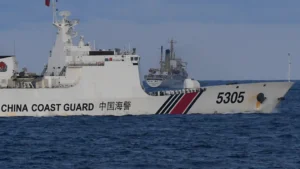
Figure 4 Chinese coast guard ships entered prohibited or restricted waters around Taiwan’s frontline islands of Kinmen on Monday, a Taiwan minister told reporters on Tuesday amid a rise in tension with Beijing. Photo: Ted Aljibe | Afp | Getty Images
Opposition KMT Challenges Lai and the DPP—Wise Counsel or Risk?
The Jan. 13 elections gave the opposition KMT effective control of the Legislative Yuan (LY), the national legislature. The KMT immediately used its control of the LY to challenge the DPP government. KMT attempted to legislate laws making the executive branch under President Lai more accountable to the LY. These efforts were opposed by the Lai administration as a power grab, and his administration appealed the proposed rules to Taiwan’s Constitutional Court, which for the most part found the rules unconstitutional. The KMT has also initiated a series of challenges to the government budget submitted by Lai’s Premier Cho Jung-tai. The two sides reached a compromise on Nov. 8, enabling the LY review of the budget to proceed. However, this skirmish portends a deadlock that could threaten Taiwan’s ability to increase defense spending as both the DPP and KMT say they are committed to do.
The opposition KMT also criticized Lai’s approach to China as it had criticized Tsai’s. In response to Lai’s inaugural address, former President Ma Ying-jeou challenged Lai’s cross-Strait approach: “He should have dialogue with the government across the Strait by returning to historical and cultural common ground with the Chinese. Only in this manner can there be a chance for peace in the Taiwan Strait.” In November, Ma invited China to send a delegation of students to visit Taiwan, reciprocating the visit of Ma and Taiwan students this April during which Chinese President Xi Jinping had a high-profile meeting with Ma. After a flurry of concerns that the Chinese Communist Party had handpicked the students, which they obviously had, Taiwan’s Mainland Affairs Council (MAC) approved the visit. The MAC then invited China to allow Chinese students to study in Taiwan on a regular basis, but China has thus far not responded. Former KMT leader of the LY Wang Jinping also visited China, and a delegation from Shanghai is scheduled to visit Taipei in December in another signal that China welcomes contacts with KMT politicians such as Taipei Mayor Chiang Wan-an.
Although China welcomed KMT visitors, it issued a stark warning that others might not be welcome. A month after Lai’s inauguration, China issued regulations to enforce the Anti-Secession Law it promulgated in 2005. These guidelines “detailed the steps it might take to punish supporters of Taiwanese self-rule. The new rules adopted by China authorize execution for what it describes as exceptionally severe cases of Taiwanese separatism, though they do not say exactly what actions might constitute a severe offense.” After a member of a tour group from Taiwan was detained in China in early June without explanation, Taiwan’s MAC issued a warning to anyone considering travel to China. On Aug. 3, a Chinese court sentenced a Taiwanese, Yang Chih-yuan, to nine years in prison for what it identified as pro-independence activities, specifically because Yang had helped organize the Taiwan National Party. Yang had been in China to teach Go. On Sept. 1 China detained an executive from Formosa Plastics without explanation.
Can Taiwan Acquire the Military Equipment It Needs?
As the wars in Ukraine and the Middle East have continued to challenge the ability of the US to supply needed weapons systems to its allies and partners, the US State Department acknowledged that “insufficient production capacity” had slowed weapons deliveries to Taiwan. That backlog was reported to have reached $20.5 billion by August. Speaking virtually to an AI forum in Washington two months earlier, Taiwan’s Vice President-elect Bikhim Hsiao bemoaned “deficiencies in the traditional US defense industry production base, ” saying that they meant that “the current US defense industry base is producing neither enough nor on time the hardware to meet global demand.” She called for the US manufacturers to enter into coproduction arrangements with Taiwan companies.
The US Department of Defense (DOD) Inspector General found that not only the speed but also the quality of deliveries was deficient, stating “the DOD’s delivery of non–mission-capable items [as part of Presidential Drawdown authority] to Taiwan inhibits the DoD’s ability to achieve its security cooperation goals and risks degrading Taiwan’s confidence in the United States.” At least one US defense industry analyst said that the delivery deficit had been cut to approximately $9 billion since then, due less to any corrective actions and more due to the normal process of transferring equipment and munitions ordered earlier.
Despite these acknowledged difficulties, on Sept. 27 the US committed to provide Taiwan up to $567 million in defense articles and services under Presidential Drawdown Authority in 2024, its largest assistance package ever for Taiwan, following its commitment of $345 million in 2023. On June 18, the US Defense Security Cooperation Agency (DSCA) offered to sell Taiwan anti-personnel Switchblade drones and anti-armor Altius drones, together worth $360 million. These contracts were then signed by Taiwan on Oct. 15 and would expand Taiwan’s acquisition of asymmetric defense capabilities.
Biden Administration Lends Support to Lai Government
Relations between Lai’s new government from the Biden administration have started on a positive note. In August, Taiwan Foreign Minister Lin Jia-lung and National Security Advisor Joseph Wu held security talks with senior Biden officials outside Washington, according to the Financial Times. The most recent gathering under this “Special Channel” convened in February 2023. In early December, the Biden administration afforded Lai courteous treatment during his transits through Hawaii and Guam en route to Taiwan’s South Pacific allies. Biden officials have viewed Lai as basically maintaining Tsai Ing-wen’s pragmatic and responsible approach toward cross-Strait relations.
On the other hand, Washington has uniformly viewed Beijing’s behavior toward Lai as belligerent, prompting demonstrations of support. Notably, US Navy vessels continue to sail through the Taiwan Strait individually and with partner nations. The week following the PLA’s brief yet expansive Joint Sword 2024B exercises in mid-October, a US Navy destroyer and a Canadian frigate transited the Taiwan Strait on Oct. 20. The PLA reacted with live-fire drills nearby Pingtan island off Fujian province two days later.
Trump’s Support Less Certain
Donald Trump’s election has added further uncertainties. On June 25, Trump told Bloomberg Businessweek that “I think Taiwan should pay us for defense. You know, we’re no different than an insurance company.” As Trump has assembled his national security team, his choices overwhelmingly reflect a far stronger commitment to defending Taiwan and a far greater emphasis on reinforcing Taiwan’s military capabilities as part of the first island chain. Secretary of State Designate Marco Rubio and National Security Advisor Designate Michael Waltz are both generally identified as China hawks and advocates for increased US military sales to Taiwan. On the sidelines of the Republican Convention, Rubio told Fox News, “I don’t have any worries about the US being supportive of Taiwan and doing everything we can to discourage the Chinese from invading.” In addition to the impact of his own nominations, Trump will walk into a US defense establishment already intently focused on defending Taiwan. Adm. Samuel Paparo, head of the US Indo-Pacific Command, told The Washington Post that “I want to turn the Taiwan Strait into an unmanned hellscape using a number of classified capabilities, so that I can make their lives utterly miserable for a month, which buys me the time for the rest of everything.”
Trump’s former National Security Advisor, Robert O’Brien, put a positive spin on Trump’s remarks to Bloomberg, saying that Trump was simply calling for burden sharing, adding that Taiwan should increase its defense spending to 5% of gross domestic product. The Taiwan government counters that it is already at 2.5% of GDP and that President Lai proposed an increase of 6% on that. Nonetheless, David Sacks of The Council on Foreign Relations captured the attitude of American analysts: “The consensus is that Taiwan is still not taking the existential threat that it faces seriously enough and should raise defense spending far more rapidly.”
Can Taiwan Build the Military Capability It Needs?
Over the past six months, Taiwan has taken a number of steps that suggest it is beginning to reform its approach to its defense. President Lai chose a civilian Minister of National Defense, Wellington Koo, who had served Tsai as National Security Advisor since 2016. Earlier efforts to reform the military by imposing a civilian minister of National Defense by President Lee Teng-hui (KMT) in the early 1990s and by President Chen Shui-bian (DPP) in 2008 both faltered, but there is hope that Koo’s extended service under Tsai may enable him to break the resistance of the uniformed military to civilian oversight and modernize the force. Koo’s announcement that the ROC military would end goose-step marching and bayonet training was considered a symbolic watershed.
In domestic procurement, Taiwan commissioned two naval corvettes equipped with Hsiung-feng anti-ship missiles, designed to counter the PLA’s growing fleet of aircraft carriers. These two will join four already in service, and Taiwan’s MND has said it expects to add five more of these corvettes by the end of 2026.
Beyond Defense Spending and Acquisitions
On Sept. 26, President Lai convened the first meeting of a special committee to strengthen civil defense and resilience on the island. Its task is to integrate civilian forces into responses to potential attacks from Beijing, manage emergencies, and maintain social order and stability. The plan would train 400,000 civilians to respond to a civil or military emergency. Taiwan civil society began a series of initiatives that would complement the government’s efforts. On Facebook, one group, the Kuma Academy, explained that it was “awakening the spirit of resistance in Taiwanese society.” China’s Taiwan Affairs Office (TAO) responded by sanctioning Taiwanese businessman Robert Tsao Hsing-cheng, who founded United Microelectronics Corporation (UMC), and Taiwanese lawmaker Puma Shen for funding and organizing the group.
The darker side of Taiwan’s response to China’s increasing campaign of gray-zone intimidation may be glimpsed in the trailer for a TV miniseries, Zero Day, planned for 2025. It will offer a dystopian view of how China might concoct an excuse to blockade and then invade Taiwan, all the while barraging Taiwan with defeatist disinformation through broadcast and social media.
Strong US-Taiwan Economic Ties Make Further Progress
Following an intensive in-person negotiating round in Taipei in early May, US and Taiwan trade negotiators continued discussions on the labor, environment, and agriculture provisions of The 21st Century Trade Initiative. A follow-on negotiating round did not convene as anticipated, indicating gaps remain. In November, US Trade Representative (USTR) Katherine Tai met her new Taiwan counterpart, Minister without Portfolio Jen-ni Yang, in Peru at the Asia Pacific Economic Cooperation Forum (APEC) trade ministerial. The USTR readout notes the “important progress” achieved under the trade initiative to date but gives no indication of future talks. Separately, the trade initiative’s first agreement, signed in June 2023, is poised to go into effect by the end of 2024 following certification by USTR and a final nod from the US Congress.
The US Treasury Department in late October announced the launch of negotiations with Taiwan on a comprehensive double taxation agreement. Long sought by Taipei, a double tax agreement had struggled to gain traction inside the US government. Views have shifted with the expanding footprint of TSMC and its suppliers in the United States since 2021. In addition, Congress this year inched closer to legislating adjustments to the US tax code that would benefit Taiwan investors in the United States. Such Congressional action could not address the double taxation concerns of US investors in Taiwan without action by Taiwan’s government, presumably after reaching agreement with the US. The Treasury Department’s announcement specifically touts the prospective agreement’s tax benefits for small and medium-sized Taiwan firms within the US semiconductor supply chain. A first round of negotiations is expected before the end of the year, and the final agreement will require the blessing of Congress.
The booming US-Taiwan commercial relationship, supported by a handful of active governmental dialogues, could face headwinds if President Trump follows through on a campaign promise to impose a 10-20% tariff on all US imports. Taiwan’s export-driven economy has grown increasingly reliant on the United States in the last half dozen years, with exports to the US poised to exceed $100 billion in 2024. At the same time, Trump has pledged even higher tariffs on China, which could cause Taiwan firms supplying the US market from China to shift manufacturing back to the island. The Lai government has expressed interest in a second trade agreement with the United States, but trade negotiations with the second Trump administration could invite scrutiny of the growing US-Taiwan trade imbalance and pressure on Taiwan to purchase more US goods.
TSMC Deepens Its Alignment with the United States
Taiwan Semiconductor Manufacturing Company brought online its first fab (semiconductor production plant) in Arizona during the fall, after having overcome a myriad of labor disputes and construction delays since 2021. Initial output batches have shown chips with slightly higher yields, meaning fewer defects per wafer, than the leading TSMC fabs in Taiwan. In a vote of confidence for TSMC’s Arizona site, the US Commerce Department on Nov. 15 finalized a $6.6 billion cash subsidy it had provisionally offered to the Taiwanese chipmaker earlier in the year.
TSMC’s reputation took a hit, however, when Canadian news platform TechInsights discovered a TSMC-manufactured chip inside Huawei’s latest AI processor in October. TSMC launched an internal investigation and identified Sophgo Technologies, a Chinese customer, as the culprit. TSMC promptly stopped shipments to Sophgo and notified the US Commerce Department, which has imposed extensive export controls on Huawei since 2019. On Nov. 10, TSMC reportedly received a letter from the Commerce Department’s Bureau of Industry and Security requiring it to suspend advanced semiconductor sales to all Chinese customers manufacturing AI processors. This so-called “is informed” letter has underscored the US government’s expectation that TSMC and other chip suppliers will conduct thorough “know your customer” checks and remain vigilant. TSMC appears unlikely to face penalties over this incident.
The incoming Trump administration will likely prioritize the continued onshoring of chip manufacturing. Trump, without evidence, accused Taiwan of “stealing the US chip industry” while on the 2024 campaign trail. He also described CHIPS funding incentives as “so bad” and instead called for tariffs on imported semiconductors to spur domestic manufacturing. Taiwan’s commanding lead in advanced semiconductors and TSMC’s now finalized contract with the US Commerce Department on its $6.6 billion subsidy provide some safeguards. A more acute risk could be pressure on TSMC to begin in Arizona production of its most cutting-edge chips, at the 2-nanometer level, ahead of the scheduled 2030 target date.
Perils Ahead
As we conclude this series of periodic updates on Taiwan and its relationship with China, cross-Strait conditions are more perilous than they have been since 1950 when the US inserted the Seventh Fleet into the Strait at the beginning of the Korean War.
Under President Lai, and almost any successor imaginable, Taiwan will continue to develop its political identity as a responsible and de-facto independent member of the global order. China will continue to insist it has the unilateral right to control Taiwan. It will expand its efforts to move Taiwan toward what it calls peaceful reunification without any prospect of success. Anticipating failure, China will continue expanding its military capability to compel reunification. Taiwan’s survival will rely on its ability to build and arm a military sufficient to deter and, if necessary, resist PLA military action. Taiwan’s efforts to ensure a peaceful status quo will depend well on its growing economic and high-technology importance as well as the support and US partner and allies. The US will find that its high technology economy is increasingly dependent on Taiwan and that supporting Taiwan is a useful component of its economic and strategic pressure against China.
This triangular clash portends a growing risk that cross-Strait political confrontation might become a military confrontation, devastating China, Taiwan, and their neighbors in East Asia and undermining US regional leadership. Is Taiwan willing to spend enough and strengthen its social cohesion and resilience to deter a Chinese assault or blockade or, if necessary, to delay one long enough for the US to choose to intervene? The challenge for Taiwan and China will remain what it has been since 2000, at least. Can they argue over their incompatible visions for Taiwan’s future without undermining their stability and prosperity? Will the US under a second Trump administration continue the US policy of “strategic ambiguity” or “dual deterrence” without dragging Taiwan into its own intensifying confrontation with China? Will China and the US find that their broader geostrategic and economic interests sufficiently outweigh their dissatisfaction with the cross-Strait status quo and trends to enable them to kick the can down the road? Finally, can wisdom and compromise overcome intransigence on all three sides?
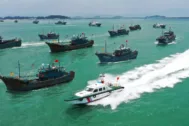
China - Taiwan
January — April 2024Taiwan and China—Steady As She Goes
As 2024 dawned, Chinese President Xi Jinping reiterated in his New Year Address that Taiwan must unify with China. In her New Year Address, Taiwan President Tsai Ing-wen, with the election of her successor only 14 days away, repeated her offer to meet China on the basis of equality, mutual respect, and without preconditions, echoing themes dating back to her first inaugural address in 2016. On Jan. 14, Tsai’s chosen successor, Vice President Lai Ching-te, won an unprecedented third successive term for the Democratic Progressive Party, promising to uphold the independence of the Republic of China, but the party lost its majority in the legislature. A month later, two Chinese fishermen operating illegally near Kinmen Island died when their boat capsized as they were pursued by the Taiwan Coast Guard. Five days later, a Chinese Coast Guard vessel boarded and inspected a Taiwanese tour boat near Kinmen. Tensions grew but they did not boil over.
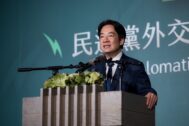
China - Taiwan
September — December 2023Taiwan Voters Choose Independence
Taiwan’s election campaign has concluded. Voters went to the polls on Jan. 13. As has been the case in almost every election, cross-Strait relations with China were the central issue, a secondary issue being President Tsai Ing-wen’s management of the economy. The outcome of the election will largely dictate the course of Taiwan-China relations over at least the next four years. The Democratic Progressive Party (DPP) candidate and President Tsai Ing-wen’s chosen successor, William Lai Ching-te, the eventual winner, proclaims that Taiwan is already independent as the Republic of China. It should continue to diversify economic linkages away from China, strengthen military deterrence, and hope that China will eventually offer talks without one-China preconditions. The opposition Kuomintang candidate, Hou Yu-ih, called for expanded cross-Strait economic ties and dialogue with China under the one-China banner to reduce tensions while Taiwan also builds its military deterrence. China has deployed economic sticks, gray-zone military intimidation, and fake news to influence the election.
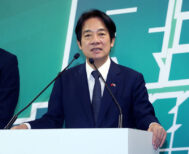
China - Taiwan
May — August 2023Stark Choices Confront Taiwan Voters
Taiwan’s presidential election campaign has begun. Lai Ching-te, Taiwan’s vice president and Democratic Progressive Party (DPP) candidate, Hou Yu-ih from the Nationalist (Kuomintang, or KMT) Party, Ko Wen-je of Taiwan People’s Party (TPP), and independent Terry Gou offer Taiwan voters four different visions of Taiwan’s future relationship with China. As senior US and Chinese officials resumed long-stalled face-to-face meetings, China warned once again that it has no room for compromise or concession on Taiwan. Yet, when Lai completed almost invisible transits through the US en route to Paraguay and back, China’s military response seemed almost pro-forma. When US, Japanese, and South Korean leaders reiterated at the trilateral Camp David summit their staunch opposition to China’s intimidation, China chose to interpret their words as one more promise to support Taiwan. The US accelerated weapons deliveries to Taiwan and expanded training for Taiwan’s military, and Taiwan announced that its defense budget will increase by 7.5% in 2024. Taiwan’s TSMC moved forward on constructing its Arizona factory despite some hiccups, and the US and Taiwan signed a long-awaited trade deal—the first part of their 21st Century Trade Initiative.
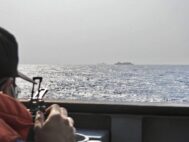
China - Taiwan
January — April 2023Confrontation Muted, Tensions Growing
As 2023 began, cross-Strait confrontation was muted. Travel began returning to pre-COVID levels across the Strait and between the mainland and Taiwan’s offshore islands. At China’s annual National People’s Congress, outgoing Premier Li Keqiang and reanointed President Xi Jinping eschewed inflammatory rhetoric about reunification with Taiwan. Taiwan and the US kept Taiwan President Tsai Ing-wen’s transit of the US low-key. Tsai met House Speaker Kevin McCarthy in California, deflecting the speaker’s expressed interest in visiting Taiwan and avoiding the destabilizing Chinese military exercises around Taiwan that followed Speaker Pelosi’s visit last August. Despite this calm, seeds of confrontation proliferated. China cut a communications cable to Taiwan’s offshore islands and announced a coast guard drill to inspect commercial shipping in the Taiwan Strait, both interpreted as practice for gray-zone coercion. China persuaded Honduras to sever its longstanding diplomatic ties with Taiwan. Taiwan increased its military budget and expanded training with US forces. Former Taiwan President Ma Ying-jeou visited China and met Chinese officials, endorsing the 1992 Consensus and signaling that the upcoming election campaign for Taiwan’s president will again offer two very different visions of Taiwan’s future relationship with mainland China.
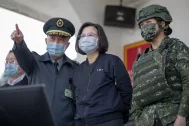
China - Taiwan
September — December 2022Tensions Intensify as Taiwan-US IT Cooperation Blossoms
In the wake of then US Speaker of the House Nancy Pelosi’s visit to Taiwan in August, China’s extensive military exercises continued to impose a more threatening “new normal” in the Taiwan Strait. Taiwan continued to be the focus of heated public exchanges between the US and China. US President Biden said, for a fourth time, that the US would defend Taiwan and added an inflammatory codicil that independence was for Taiwan to decide. At the 20th Congress of the Chinese Communist Party, General Secretary Xi Jinping promised China would strive for peaceful reunification with Taiwan but would not renounce use of force. On Dec. 23, Biden signed the Taiwan Enhanced Resilience Act and a State Department appropriation providing $2 billion in loans for Taiwan to purchase US equipment. Two days later, China sent 71 military aircraft and seven ships to intimidate Taiwan, its largest-ever one-day exercise near the island. Two days later, Taiwan President Tsai Ing-wen announced that Taiwan would extend its military conscription to 12 months. TSMC formally broke ground for the first of two factories in the US, a $40 billion investment.
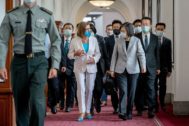
China - Taiwan
May — August 2022Pelosi’s “Ironclad Commitment” or “Political Stunt” Leads to Crisis and Promises Instability in the Taiwan Strait
Between May 1 and Sept. 1, tensions between Taiwan and China exploded in ways few anticipated but were in retrospect the culmination of well-established dynamics. The US once again was right in the middle. On Aug. 2, US Speaker of the House Nancy Pelosi arrived in Taiwan, which Taiwan’s government celebrated as the most important visit in at least 25 years by a US politician. She promised Taiwan President Tsai Ing-wen that US support for Taiwan’s security would remain “ironclad.” On Aug. 4, the day after Pelosi departed Taiwan, China signaled its displeasure by conducting the most extensive military exercises ever conducted near Taiwan, closer to the island than any before, and launching ballistic missiles over Taiwan’s capital to land in waters east of the island. Throughout these exercises, the Chinese, Taiwan, and US militaries avoided any interactions that might have provoked confrontation. On Aug. 10, the Chinese military announced that the exercises had concluded, achieving their objectives, but that the military would continue its activities around Taiwan.
This crisis occurred three months after US Secretary of State Antony Blinken delivered a long-awaited speech on US China policy, claiming that policy toward Taiwan and China, and the US commitment to peaceful resolution of any disputes between them, remained unchanged. China rejected Blinken’s claims of US consistency and insisted that Washinging was hollowing out its commitment to respect Beijing’s position as the only legal government of China, including Taiwan. China expressed particular anger at President Biden’s pledges to defend Taiwan and at the continuing series of high-level US officials visiting Taiwan. Beijing warned it would react harshly if Pelosi visited Taiwan, as she had promised to do. She visited, and China reacted, calling her visit a “political stunt.” China laid out its familiar claims to Taiwan in a celebration of the 30th anniversary of the 1992 consensus and again in its third White Paper on cross-Strait relations. All this comes as Chinese commentators repeat expectations that the 20th Congress of the Chinese Communist Party, scheduled for this fall, will reaffirm the party’s tough Taiwan policy.
Largely obscured by these dramatic developments, Taiwan continued to expand its legitimacy as a constructive international actor, attracting more public support from major international actors beyond the US, such as the G7, the European Union, the United Kingdom, Australia, Japan, and South Korea.
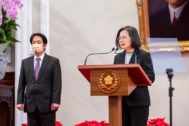
China - Taiwan
January — April 2022Taiwan and China Seek Lessons from Ukraine as Taiwan’s International Position Strengthens
The year 2022 in cross-Strait relations began quite predictably. Both sides repeated their calls for reconciliation, but in completely incompatible terms. Chinese leaders signaled somewhat obscurely that a new tougher Taiwan policy might be announced at the Chinese Communist Party’s Twentieth Party Congress scheduled for this fall, which could further increase cross-Strait tensions. This predictability was upended by Russia’s invasion of Ukraine. China insisted that this international confrontation had no lessons for the purely domestic matter of reunifying Taiwan. Nonetheless, China, Taiwan, and the US have all begun seeking military lessons from the Ukraine War. Taiwan and the US have intensified their discussion as to whether and how aggressively Taiwan should adopt an asymmetric defense relying on the small portable weapons—Javelins, Stingers, and others—that have thus far proven so successful in Ukraine. Diplomatically, the Biden administration has struggled to reassure China that it continues to honor the One-China Policy introduced in the Shanghai Communique 50 years ago even as it signals renewed support for Taiwan’s security. China’s support for Russia has antagonized Europe, Taiwan continues to enjoy success in international diplomacy, and Pacific allies Japan and Australia have become more explicit in their support for cross-Strait stability.
In Taiwan domestic politics, President Tsai Ing-wen is in the strongest position of any Taiwan president midway through a second term after leading her Democratic Progressive Party (DPP) to victories in a local by-election and a local recall effort, both called by the opposition Nationalist Party (Kuomintang or KMT). If the DPP does well in regularly scheduled local elections this fall, that success may set the stage for a confrontation with Xi Jinping as he begins his history-making third term as general secretary of the modern Communist Party.

China - Taiwan
September — December 2021Taiwan Gains Ground Internationally, but Will China Retaliate?
At the end of 2021, Taiwan and President Tsai Ing-wen stand in as strong a position as they have enjoyed in years. Taiwan has parlayed its opening of a representative office in Lithuania and Beijing’s sanctions against Lithuania into public support from other European nations. For the first time Taiwan was invited to a US multilateral event, President Biden’s Democracy Summit. On Dec. 18 Tsai unexpectedly defeated four opposition Kuomintang (KMT)-sponsored referendums that would have reversed a series of her executive actions as president, one of which would have obstructed her efforts to move forward on a bilateral trade agreement with the US. These victories effectively gave the Tsai administration a mid-term vote of confidence and embarrassed newly elected KMT Chairman Eric Chu Lilun. Chinese President Xi Jinping used the anniversary of the 1911 Xinhai revolution to underscore that reunification of Taiwan with the mainland would be the measure of the Communist Party’s success in rejuvenating China. Repeated Chinese air sorties into Taiwan’s Air Defense Identification Zone (ADIZ) made clear China’s willingness to employ coercive tactics short of war to advance its aims. The combination of Taiwan’s successes and China’s determination to subjugate Taiwan may presage a contentious cross-Strait 2022.

China - Taiwan
May — August 2021Cross-Strait Tension Increasing Beneath a Surface Calm
Cross-Strait tensions intensified between May and August 2021, despite the superficial calm that generally prevailed after the dramatic confrontations earlier in the year. China again blocked Taiwan’s participation at the World Health Assembly (WHA), and Xi Jinping reaffirmed the Communist Party’s commitment to the peaceful reunification of Taiwan at the Party’s 100th anniversary. Chinese military flights into Taiwan’s Air Defense Identification Zone were almost routine until China launched 28 sorties in a single day to protest the G7 summit’s endorsement of Taiwan’s participation in the WHA. The Biden administration announced its first arms sales to Taiwan. Several countries, most notably Japan and Australia, made their strongest statements ever in support of Taiwan. Lithuania announced it would permit the opening of an unofficial “Taiwanese” representative office. Beijing withdrew its ambassador from Lithuania and told Lithuania to withdraw its ambassador from Beijing. The US dismissed fears that its withdrawal from Afghanistan might portend abandonment of Taiwan. In coming months, Taiwan faces three potential turning points: Taiwan’s opposition Nationalist Party will elect a new chair; a referendum could overturn the opening of Taiwan’s market to US pork; and the US has signaled it will invite Taiwan to President Biden’s democracy summit despite threats of military retaliation by China.